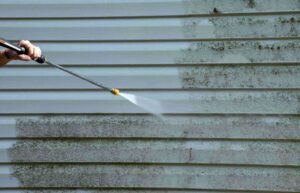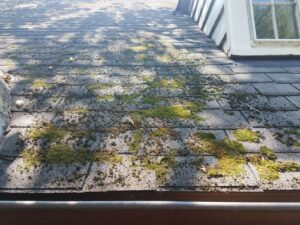How to Get Rid of Mold Outside of the House
It’s important to know how to effectively clean mold off various surfaces, especially outside of the house. The primary goal is to get rid of mold early on to prevent its spread and potential hazard from becoming a more serious problem. If left unaddressed, mold has the potential to damage wood surfaces and create indoor pollutants, contributing to health concerns.
In this blog post, we will explore common types of molds that are usually found outside your house. You will learn effective techniques for mold removal using common cleaning tools and methods. Lastly, you’ll get more helpful insights and additional tips to address the mold problem in your home.
Common Type of Molds
There are different types of molds. We’ll discuss the two commonly seen molds on the exterior of your home below, which are typically the “green” molds and the “black” molds. If you want to know further about other common types of molds and how to get rid of them, check out our previous article here.
What is a Black Mold?
Black mold is a form of fungus with a dark green or black appearance. When people mention black mold, they usually mean Stachybotrys chartarum (S. chartarum). This mold thrives on materials rich in cellulose, such as paper, wood, and drywall. Cellulose, found in fruits, vegetables, and plant cell walls, serves as its preferred growth substrate.
To thrive and expand, black mold requires warm temperatures and moisture. It typically shows up in areas of your home that are damp or have experienced water damage, like basements, showers, and windows.
Is Black Mold Outside of House Dangerous?
Black modl on the outside of your home could be dangerous depending on the person. According to the National Institute of Environmental Health Sciences (NIEHS), black mold exposure can cause the following types of health problems:
- Allergy and irritation
- a runny or blocked nose
- watery, red eyes
- a dry cough
- skin rashes
- a sore throat
- sinusitis
- wheezing
- infection
What is a Green Mold?
Green mold is a general term referring to diverse fungi species that flourish in shades of green. Its texture can be soft and fuzzy or powdery, displaying a range of green colors. Although commonly found in fruits, bread, and various food items, green mold can also grow in damp areas around the house.
While several types of mold can have a green appearance, the most prevalent ones include Cladosporium, Aspergillus, and Penicillium.
What Causes Green Mold Outside of House?
The presence of green mold outdoors is a result of different fungi flourishing in damp and humid settings. Key contributors to its growth include excessive moisture, high humidity levels, water leaks or floods, insufficient ventilation, and condensation.
How to Get Rid of Mold Outside of House
Let’s learn how to get rid of molds outside of your house with a few effective techniques.
Wearing Protective Gear
First, limit your exposure to mold by wearing protective gear.
- To minimize exposure to mold and spores, wear a mask or an N-95 mask to prevent inhaling them.
- Use household rubber gloves that cover your hands and extend to the middle of your forearm when using water and mild detergent.
- Protect your eyes by wearing goggles without ventilation holes to avoid contact with mold or spores.
Using Bleach
The CDC (Centers for Disease Control and Prevention) recommends homeowners avoid the use of bleach for mold removal without protective gear. If you choose to use bleach on nonporous surfaces to get rid of mild mold growth, here’s a step-by-step guide article to effectively eliminate molds using disinfecting bleach.
Using Scrub Brushes and Cloths
Use a cloth on surfaces prone to damage from scrubbing. Be sure to brush off as much mold as you can before lightly wetting the surface for cleaning. Reusing the tools is not recommended.
Using Vinegar or Hydrogen Peroxide
If you prefer natural methods for mold removal, give hydrogen peroxide or vinegar a try. Keep in mind that these options may take more time to be effective compared to bleach, and they might not remove stains or work as well on all types of mold or surfaces.
- Vinegar: Fill a spray bottle with straight white vinegar and spray it on the moldy spot. Leave it for an hour, then wipe the area with water and let it dry.
- Hydrogen Peroxide: Fill a spray bottle with a 3% hydrogen peroxide solution and spray it on the area with mold. Leave it for 10 minutes, then scrub off the mold.
When to Call for Professional Help
If you spot molds, it’s best to call in the pros right away. Professionals can easily handle mold removal from the outside of your home using methods like pressure washing or power washing. They not only ensure a thorough cleanup but can also inspect windows, seals, and tricky spots that might be hard to reach with regular cleaning.
Conclusion
In conclusion, learning how to effectively clean mold outside your house is crucial for maintaining a healthy living environment. It’s important to carry out safety precautions when eliminating molds, such as wearing protective gear. When mold issues become persistent or hard to manage, seeking professional services like pressure washing ensures a thorough and effective cleanup.


